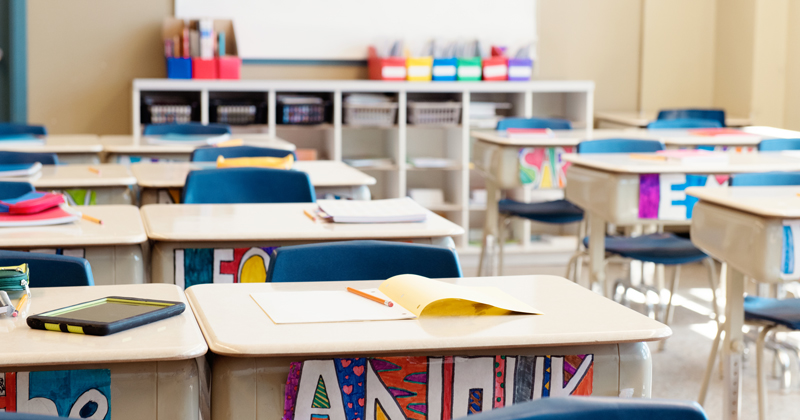One in five pupils were “persistently” absent from school this year, with an attendance gap between poorer children and their better off peers widening.
Department for Education data today reveals how sky-high post-pandemic absence rates are not improving.
In total, 22.3 per cent of pupils missed more than one in 10 sessions in the 2022-23 academic year. This has barely improved from the 22.5 per cent rate in 2021-22, despite huge focus from schools and politicians.
Before the pandemic, the persistent absence rate sat at between 10 to 13 per cent.
Attendance gap grows
This year, almost two in five disadvantaged pupils (37.9 per cent) were persistently absent – which has actually worsened from 37.2 per cent last year.
This is also more than double the rate for their better-off peers – whose persistent absence rates have instead dropped from 17.5 per cent to 16.7 per cent in the same timeframe.
It means the disadvantage gap in attendance has widened by 6.7 percentage points, rising from 14.5 per cent in pre-pandemic 2018-19 to 21.2 per cent this year.
This year, persistent absence was highest in special schools (38.7 per cent), followed by secondary (28.3 per cent) and primary (17.2 per cent).

The overall absence rates for 2022-23 was 7.5 per cent, a drop of just 0.1 per cent.
The absence rate has risen for school pupils with an education, health and care plan, from 12.1 per cent to 13.3 per cent this year.
DfE said illness absence – which includes a positive Covid case – remained higher than pre-pandemic levels, at 3.7 per cent during spring and 3 per cent during the summer term. This was previously about 2.5 per cent.
Authorised absence rates were 5 per cent, down from 5.5 per cent last year. However, unauthorised absences have risen slightly from 2.1 per cent to 2.5 per cent.
‘We all have to play our part to fill classrooms’
Tackling absenteeism has been high on ministers’ agendas, but they have faced criticism over the scale of interventions.
Recently launched “attendance hubs” aim to help schools share best practice on reducing absence, but they will only reach 600 of the around 20,000 state schools nationwide.
Government has also hired 13 attendance advisers. But a Schools Week investigation revealed this is dwarfed by the 600 attendance staff councils have had to cut during the austerity years.
James Bowen, assistant general secretary at NAHT school leaders’ union, said schools “cannot address the issue alone”, adding: “The government really does need to redouble its efforts and commit the necessary resources to tackle this issue. In particular, there needs to be greater investment in specialist teams which work directly with pupils who frequently miss school and their families.”
Education secretary Gillian Keegan said: “Being in school is quite simply the most important thing for children’s education, and so valuable for their mental health.
“We all – government, schools, parents and young people – have a part to play in making sure classrooms are full day in, day out.”
The figures above do not include Covid absences. Schools were advised to no longer record pupils who did not attend for reasons related to the pandemic using a separate code in April 2022.
If you include Covid absences, then the absence rate for 2021-22 was 8.6 per cent. The persistent absence rate was 27.5 per cent.
The data also reveals how teacher strike days impacted attendance.
Only one national strike day had above half of pupils attending school – July 5 at 54 per cent. The six other strike days had between 43 to 50 per cent attendance.
















[…] Disadvantage is often highlighted in education data regarding the issues above. For example, the new fine system will likely affect the disadvantaged at secondary more. Similarly for attendance, the gap between disadvantaged and non-disadvantaged has increased. […]